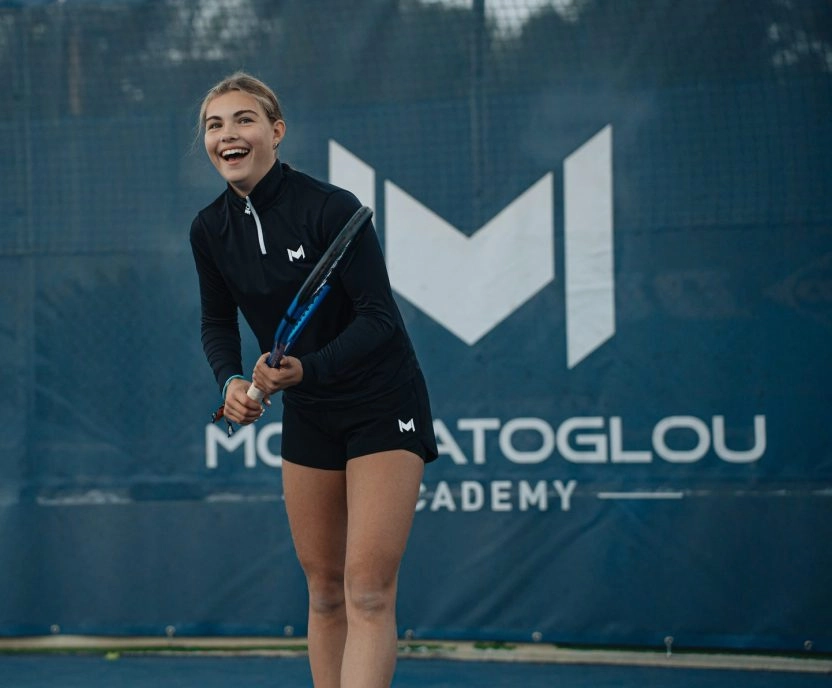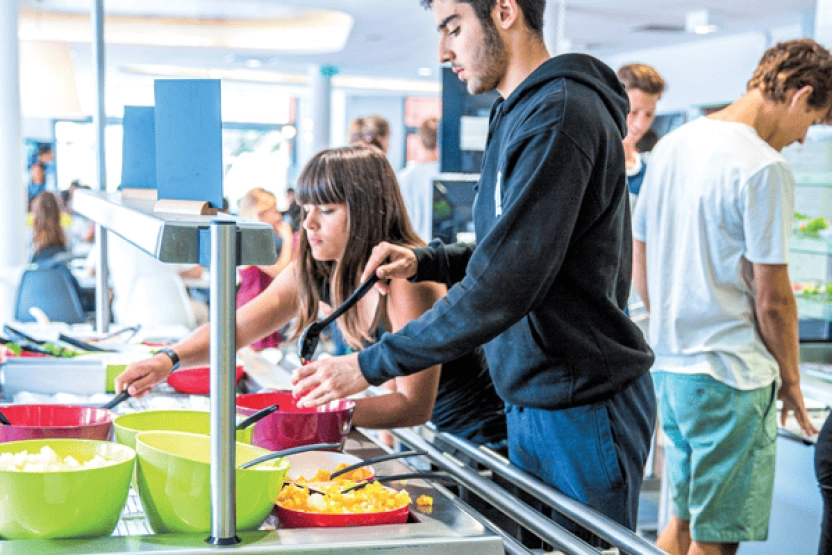In tennis, it’s difficult to play every match at your best. There are a number of factors which can limit your maximum potential on the day and which need to be taken into account:
- Internal factors: Physical factors (lack of mobility, muscular pain from the previous day’s matches, etc.). But also on a mental level (emotional state, thoughts, stress of the competition, lack of motivation…).
- External parameters: weather conditions (temperature, wind, sun, etc.), the playing surface, the opponent’s game, the quality of the ball, personal equipment, spectators milling around the pitch, etc.
Although there are many parameters to take into account, if we create good habits, we can get closer to our best level. It’s important to create routines to prevent any of these factors from preventing us from playing our best tennis. We’re going to take a look at five specific routines that help you prepare for your tennis match so that you’re at your best. We’re not talking about a simple warm-up before an official session, but there are a number of practices you can learn and repeat regularly to prepare yourself for playing tennis.
1) Positive mental conditioning

We often talk about warming up physically, but warming up mentally is just as important. Because it is our brain, the pilot of our own body, that is going to help us reproduce a movement, a skilĺ which is a driving force to perform in sport.
Positive mental conditioning will increase our chances of success in tennis. Positive thinking gives us a great chance of doing the right actions, and getting the desired results.
There’s nothing simpler than repeating positive affirmations to yourself regularly to give your brain a positive workout. The more we repeat positive phrases to ourselves, the more we’ll convince our brain that we can do it. It’s up to each of us to find our own words to motivate ourselves.
2) Mental visualisation
Many tennis players are increasingly using this ‘creative’ visualisation strategy to improve their performance in tournaments. The more in harmony the body and mind are, the stronger our physiological and biomechanical skills. This involves creating your own scenario, in which you see yourself achieving your objective as well as possible, winning and shaking your opponent’s hand.
All these positive images can be used to correct a technique, break a mental block that is impossible to overcome in a physical situation, relax, energise and improve concentration, as well as developing a winning attitude specific to tennis.
As well as providing positive images and reducing stress, visualisation helps you to exercise your brain and develop your cognitive faculties on a daily basis. In short, it will be beneficial for your sporting, personal and professional life. A godsend!
Please note! This mental imagery exercise is not to be taken lightly and should be incorporated into your pre-match routine (it can also be used during the match and afterwards).
If you repeat this pattern every day, even when you don’t have any official matches, it will become a real habit that will clearly help you to move forward and feel better on a daily basis. This will have an impact on the way you play tennis and you’ll be even better at beating your opponents one by one.
3) Joint unlocking

The body is put to the test during opposition. It is therefore important to ensure that the body’s mechanics are working properly in preparation. It’s a gradual process that will enable the body to find the mobility and amplitude it needs during a match.
It’s important to use mobility exercises before an effort to limit joint conflicts that could cause problems during a movement (serve, forehand, etc.).
Here are a few examples of exercises:
- Head circles: 10rotations to the left, 10 to the right.
- Shoulder rotations: circular movements forwards and backwards (10 times).
- Pelvic tilt : back and forth movements to mobilise the hips.
- Ankle circles: 10 rotations in each direction for each foot.
4) Breakfast and packing

Eating well before tennis is also an important part of your routine. Without fuel, your body won’t have enough energy for a full performance. For example, a dairy product, oatmeal, fruit and a hot drink will be enough to get you to the court with a full tank.
Be careful not to eat too much sugar before a match to avoid raising the glycaemic index too high and quickly running out of energy.
Once you’ve recharged your batteries, pack your bag carefully with all the essential accessories (towel, rackets, overgrips, drinks, etc.). These are the weapons you’ll be using, so prepare them carefully. And don’t forget to arrange to leave for the tournament early, so that you arrive 30 minutes beforehand to warm up gradually and actively.
5) Pre-match warm-up

Now it’s up to you to find your own tennis warm-up. One that will gradually raise your heart rate and body temperature. You’ll then arrive on the court ready to accelerate 100% from the first point. Music of your choice will help you stay focused. It will also help you relax if you need to, or energise you. Choose the right one to suit your emotional and physical state of mind.
During this warm-up, it’s also a good idea touse positive creative visualisation to give yourself a boost and get onto the court ready to fight.
The combination of physical effort + music + visualisation is ideal before starting the opposition. It’s the search for perfect harmony of body and mind.
FAQ
-
To relax before a confrontation, it’s essential to breathe properly and calm your mind. Practice deep breathing exercises to reduce stress and oxygenate your muscles. Do some gentle stretching to release physical tension. Mentally visualise positive points and successful situations on the court. This routine should include a mental relaxation phase: listen to soothing music or concentrate on your goals. Finally, stay hydrated and make sure you manage your mental preparation so that you can approach the duel calmly.
-
Before playing, it’s important to choose foods that are rich in carbohydrates to provide energy, while being easy to digest. Here are a few options:
Banana: Rich in carbohydrates and potassium, it helps prevent cramps.
Wholemeal pasta or brown rice: Provides complex carbohydrates for lasting energy.
Wholemeal bread with chicken or turkey: Provides light protein to maintain muscle strength.
Plain yoghurt with fruit: Combines protein and carbohydrates for easy digestion.
Avoid foods that are too fatty or heavy to avoid digestive discomfort during the competition.








